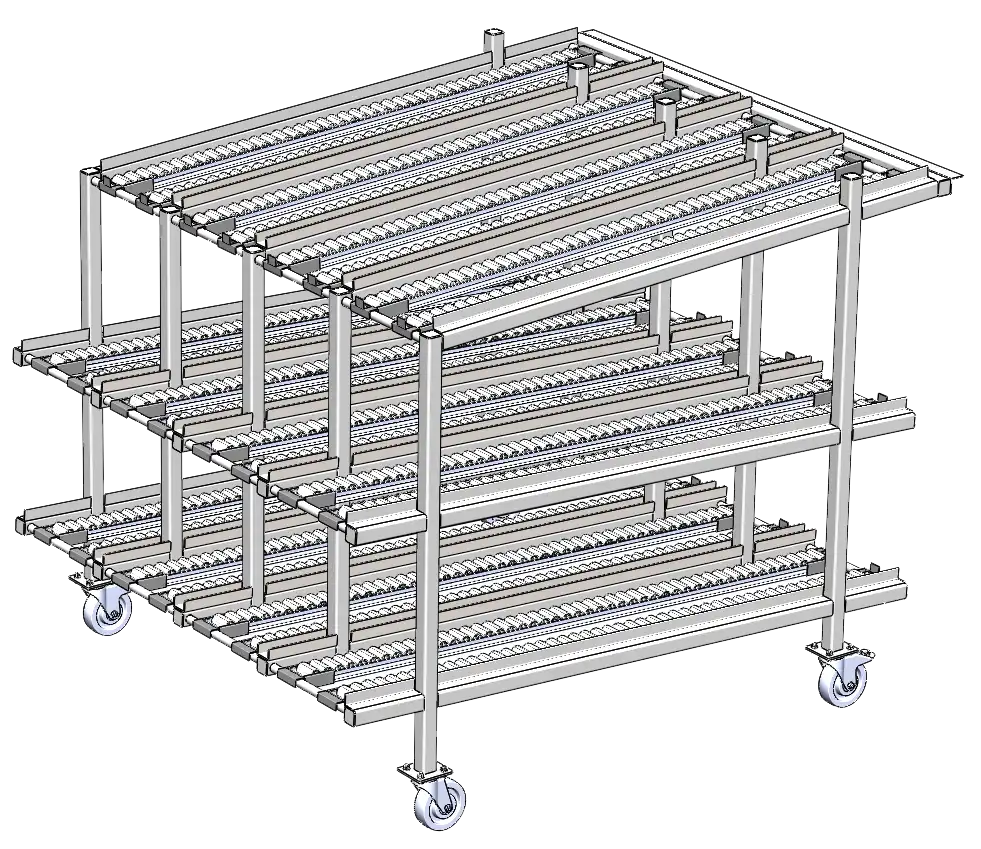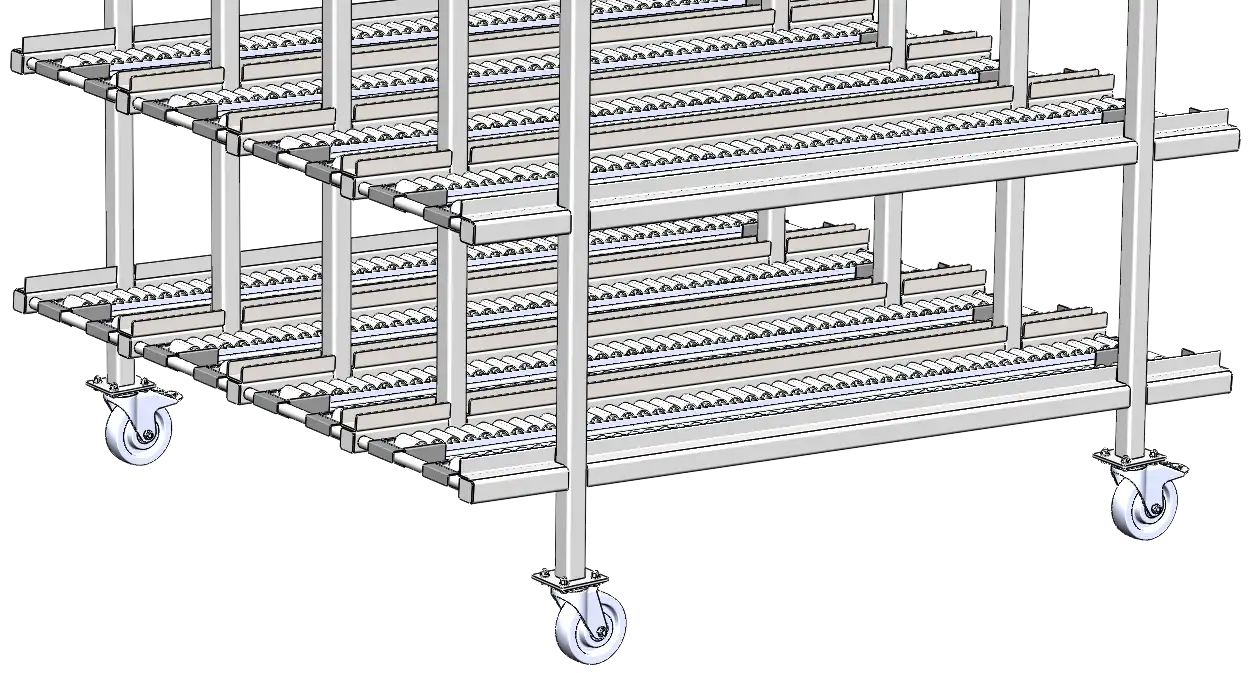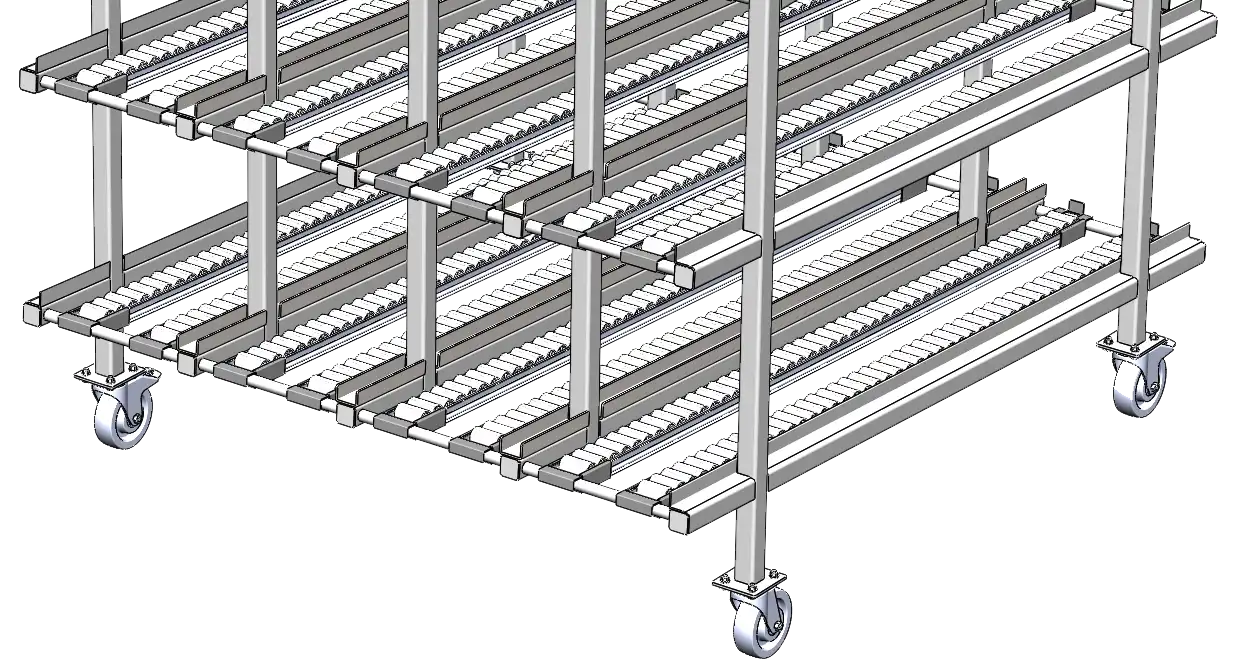Explore innovative designs, practical applications, and the numerous benefits of utilizing a wine barrel rack for your facility.
Read MoreKanban Flow Racks: Revolutionizing Workflow Efficiency
What are Kanban Flow Racks?
Kanban flow racks are an essential tool in lean manufacturing that help optimize workflow and maximize efficiency. Before diving into the importance and benefits of using kanban flow racks, it’s crucial to understand the concept of kanban itself and why it is relevant in lean manufacturing.
Key Takeaways:
- -> Kanban is a system that uses visual signals to indicate the need for production or replenishment.
- -> It helps eliminate waste, improve inventory management, and streamline processes.
- -> By implementing the kanban system, manufacturers can maximize efficiency and minimize lead time.

Why are Kanban Flow Racks Important in Lean Manufacturing?
In order to understand the importance of these flow racks, it’s important to define lean manufacturing and its principles. Lean manufacturing is a philosophy that focuses on creating value by eliminating waste and improving processes, efficiency, and quality.
Definition of Lean Manufacturing:
The principles of lean manufacturing include continuous improvement, respect for people, and the relentless pursuit of waste reduction. By reducing waste and streamlining processes, manufacturers can reduce costs, improve customer satisfaction, and gain a competitive edge in the market.
Kanban flow racks play a crucial role in lean manufacturing by allowing for efficient inventory management and improving workflow. In fact, they enable manufacturers to implement a pull-based system where materials are only refilled when needed, preventing overproduction and reducing waste.
Benefits of Using Kanban Flow Racks
Implementing kanban flow racks in lean manufacturing offers various benefits that ultimately lead to better productivity and efficiency.
- Eliminating waste in production: Kanban flow racks help identify areas of waste in the manufacturing process such as excess inventory, overproduction, and unnecessary wait times. By reducing waste, manufacturers can free up resources and focus on value-added activities.
- Increasing productivity and efficiency: With these flow racks, materials are easily accessible, organized, and visually managed. This ensures that employees have everything they need at the right time and in the right quantity, minimizing downtime and maximizing productivity.
- Reducing lead time and inventory costs: These flow racks enable a just-in-time (JIT) inventory system, where materials are replenished exactly when needed and in the required quantity. This helps reduce lead time, as well as the costs associated with carrying excessive inventory.
Types of Kanban Flow Racks
There are several types of kanban flow racks that can be implemented based on the specific needs of a manufacturing environment. The most common types include:
- Single-bin kanban system: In this system, storing materials in a single bin is a common process. When the bin is empty, it serves as a visual signal to replenish the materials.
- Two-bin kanban system: This system uses two bins – one for active materials and another for replenishment. When the active bin is empty, it is replaced with the replenishment bin, while another order is placed for a new replenishment bin. This system ensures a continuous flow of materials without interruption.
- Multiple-bin kanban system: The main function of this system is the utilization of multiple bins for each material. When a bin is empty, it is replaced with a full bin, while the empty bin is sent for refill. This system allows for a more efficient and constant supply of materials.

How do Kanban Flow Racks Work?
Kanban flow racks work based on a pull system, where materials are replenished based on actual demand. The key components of functioning kanban flow racks include:
- Pull system to manage inventory levels: When the depletion of materials occurs, the empty bin or container serves as a visual signal to reorder or restock. In essence, this ensures that overstocking materials will never be an issue and that production never exceeds actual demand.
- Visual signals and kanban cards: The utilization of visual signals such as color cards or flags typically indicates the material status. Basically, these provide a visual indication to the team by attaching to bins or racks.
- Implementing a replenishment process: The renewal process kicks in after triggering a visual signal. Whether it involves picking up the empty bin or placing an order, a replacement process will ensure the restocking of materials in a timely manner.
Key Components for Effective Kanban Flow Racks
To ensure the effectiveness of these flow racks, certain key components must be considered:
- Setting the appropriate size and number of bins: It is important to determine the right size and number of bins based on the demand and frequency of material usage. As a result, this helps keep a balance between having enough inventory to meet demand and avoiding excess stock.
- Efficient inventory management: Regularly monitoring and reviewing inventory levels is critical to maintaining an efficient kanban flow rack system. This includes keeping track of usage patterns, reorder points, and lead times for ensuring the replacement of materials takes place in a timely manner.
- Clear communication and collaboration within the team: Effective communication and collaboration are essential for the success of the kanban flow rack system. This involves training team members on the proper usage of kanban cards, encouraging open communication, and fostering a culture of continuous improvement.

Implementing Kanban Flow Racks in Practice
Implementing kanban flow racks requires careful planning and execution. Follow these steps to implement these flow racks in your manufacturing environment:
-
Analyzing current workflow and identifying bottlenecks: Begin by conducting a value stream mapping exercise to gain a clear understanding of the current workflow. Identify areas of waste, bottlenecks, and opportunities for improvement. Value stream mapping helps visualize the flow of materials and information, allowing for a more efficient redesign of processes.
Designing and setting up kanban flow racks: Consider factors such as rack placement, layout, and the specific materials or products that will require storing. Ensure the flow racks are easily accessible and arranged in a logical sequence. Select the right rack materials and configurations based on the requirements of your manufacturing environment.
-
Establishing kanban rules and processes: Define the inventory limits, such as maximum and minimum quantities, for each material. Determine the refill triggers, such as when a bin is empty or when a specific quantity is reached. Also, train employees on the proper usage of the kanban system, including how to read and interpret kanban cards and signals.
-
Monitoring and continuously improving the kanban system: Regularly review and monitor the performance of your kanban flow racks. Keep track of key metrics such as lead time, inventory turnover, and customer satisfaction. Make adjustments and improvements as needed to ensure optimal efficiency.
Best Practices for Successful Kanban Flow Rack Implementation
To ensure a successful implementation of kanban flow racks, consider the following best practices:
- Ensure top-down commitment and involvement: Gain support from management and ensure they play an active role in the implementation of the kanban system. This will help foster a culture of continuous improvement and encourage employee engagement.
- Regularly review and update kanban system: As your manufacturing environment evolves, it is important to regularly review and update your kanban system. This includes adjusting inventory limits, optimizing rack layouts, and making any necessary process improvements.
- Foster a culture of continuous improvement: Encourage feedback and suggestions from employees on how to improve the kanban system. In essence, create an environment where continuous improvement is valued and celebrated.
Summary
Kanban flow racks are an important tool in lean manufacturing for maximizing efficiency and optimizing workflow. By implementing kanban flow racks, manufacturers can eliminate waste, increase productivity, reduce lead time, and achieve better inventory management. With proper planning, monitoring, and continuous improvement, kanban flow racks can significantly contribute to the success of a lean manufacturing operation.

Customize Your Own & Get a FREE Estimate!
Simply e-mail us at sales@plexformps.com with all your information
OR call us today & speak to one of our packaging professionals









